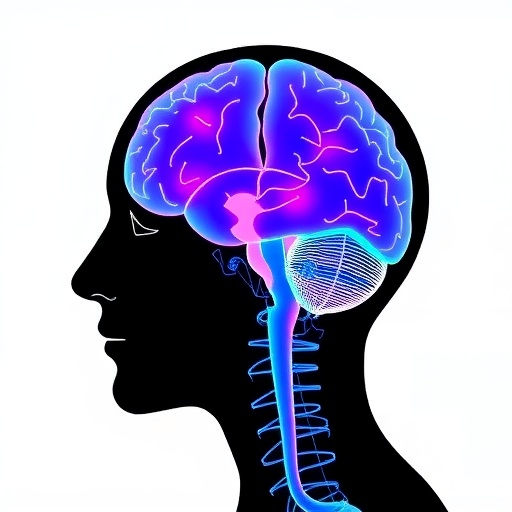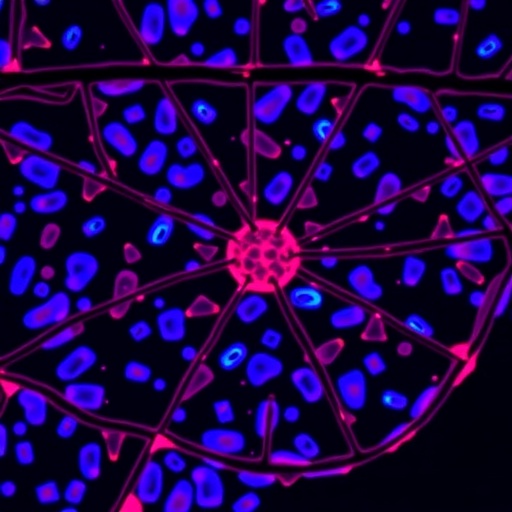
In a groundbreaking study that marks the first of its kind within the Palestinian healthcare system, researchers have unveiled alarming insights into the prevalence and severity of chemotherapy-induced neurotoxicity in cancer patients. Published recently in BMC Cancer, this extensive investigation sheds light on the neurological toll exacted by chemotherapy regimens, emphasizing the urgent need for tailored clinical approaches and enhanced therapeutic frameworks in oncology care.
Chemotherapy, a cornerstone of cancer treatment worldwide, is notorious for its broad spectrum of adverse effects. Among these, neurotoxicity—a form of nervous system damage—poses a significant challenge, often diminishing patients’ quality of life and complicating treatment outcomes. Despite its critical implications, the incidence and character of chemotherapy-induced neurotoxicity had remained virtually unexplored within Palestinian medical institutions until now.
The study conducted by Warrad, Abushar, Qubbaj, and colleagues retrospectively examined 196 patients from various hospitals across Palestine who underwent chemotherapy for different malignancies. The demographic profile revealed a median patient age of nearly 57 years, with a notable female predominance and a substantial majority diagnosed with solid tumors. Such a cohort offered a valuable cross-section of the typical oncology cases treated in the region.
Central to the analysis was the use of a comprehensive 65-item functional neurotoxicity scale, a validated tool designed to quantify the presence and intensity of neurological side effects. Employing this scale allowed the research team to systematically assess a wide array of neurotoxic symptoms ranging from sensory disturbances to motor impairments, ensuring a nuanced understanding of chemotherapy’s impact beyond traditional clinical observations.
Results from the study highlighted a staggering prevalence of neurotoxicity: over 60% of patients experienced moderate neurological symptoms, while nearly a quarter endured severe afflictions. These findings underscore a critical concern—that neurotoxicity is not a peripheral issue but a widespread clinical phenomenon that demands serious attention in oncology practice.
Notably, the analysis uncovered statistically significant correlations linking neurotoxicity severity with several patient characteristics. Female patients were more susceptible than their male counterparts, and those diagnosed with solid cancers exhibited increased neurotoxic burden. Moreover, older patients and those subjected to a higher number of chemotherapy cycles faced greater risks, suggesting an accumulative effect tied to both demographic and treatment-related factors.
Among the chemotherapeutic agents implicated, fluorouracil (5-FU) and oxaliplatin emerged as the most commonly used drugs associated with neurotoxic manifestations. Their widespread application in treating prevalent cancers such as colorectal and breast cancer within the study cohort points to the necessity of re-evaluating standard protocols through the lens of neurotoxicity risk.
The implications of these findings extend beyond the mere characterization of side effects. They call for an integrated approach wherein oncologists, neurologists, and supportive care teams collaborate closely to tailor chemotherapy regimens and implement early monitoring strategies. Such multidisciplinary efforts could facilitate timely intervention, potentially mitigating the severity of neurotoxicity and preserving patients’ functional status.
Additionally, the study emphasizes the broader context of healthcare resource allocation and policy-making within Palestine. Recognizing the high incidence of chemotherapy-induced neurotoxicity should prompt the incorporation of neuroprotective strategies into national cancer treatment guidelines and encourage investment in supportive care infrastructure.
Given the retrospective nature of the study, the authors advocate for prospective, longitudinal research endeavors to dissect the long-term neurological consequences of chemotherapy in this population. Understanding the chronicity and possible irreversible nature of neurotoxic damage remains a pressing challenge that future studies must address.
Furthermore, the research invites exploration into the efficacy of emerging neuroprotective agents and rehabilitative interventions. Investigating pharmacologic candidates, such as neurotrophic factors, along with non-pharmacologic approaches like physical therapy and cognitive rehabilitation, could offer new avenues to enhance patient outcomes.
The study’s pioneering status within the Palestinian healthcare system also highlights disparities in cancer care research globally. It serves as a call to action for underrepresented regions to amplify epidemiological data collection, ensuring that clinical guidelines are informed by diverse patient populations and reflective of regional treatment landscapes.
In conclusion, the revelation of chemotherapy-induced neurotoxicity’s high prevalence in Palestinian cancer patients opens a pivotal chapter in oncology research and patient care. It underscores a critical imperative to implement personalized treatment protocols, systematic symptom assessment, and comprehensive multidisciplinary care models. These efforts collectively hold the promise of mitigating neurotoxicity’s debilitating effects, thereby improving both survival and quality of life for cancer patients locally and potentially across similar healthcare settings worldwide.
The study by Warrad et al. not only enriches scientific understanding but also catalyzes a vital discourse on how healthcare systems can evolve to meet the complex needs of cancer populations. As researchers and clinicians continue to unravel the intricacies of chemotherapy’s impact on the nervous system, the ultimate beneficiaries will be the patients whose therapeutic journeys demand both efficacious and empathetic care approaches.
Subject of Research: Chemotherapy-induced neurotoxicity in cancer patients within the Palestinian healthcare system
Article Title: Neurotoxicity associated with cancer chemotherapy: the first study in the Palestinian healthcare system
Article References:
Warrad, R., Abushar, A., Qubbaj, A. et al. Neurotoxicity associated with cancer chemotherapy: the first study in the Palestinian healthcare system. BMC Cancer 25, 904 (2025). https://doi.org/10.1186/s12885-025-14348-w
Image Credits: Scienmag.com
DOI: https://doi.org/10.1186/s12885-025-14348-w
Tags: cancer patient demographics Palestinecancer treatment side effectschemotherapy adverse effects studychemotherapy neurotoxicity Palestinefunctional neurotoxicity scalegender differences cancer patientsneurological impact chemotherapyneurotoxicity in cancer treatmentoncology care improvementsPalestinian healthcare researchpatient quality of life cancersolid tumors chemotherapy effects




